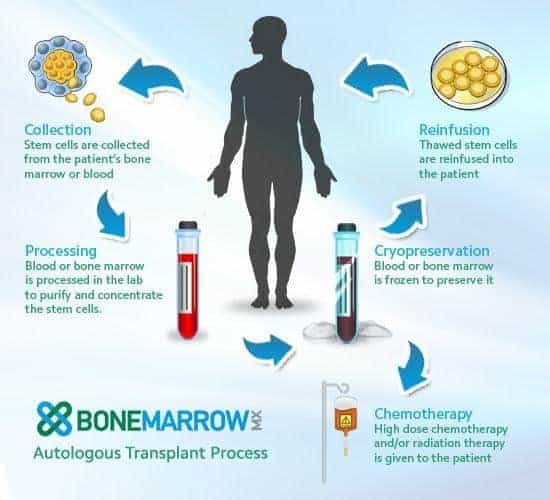What is an Autologous Stem Cell Transplant?
The care you need before a transplant depends on your disease. Your doctor will explain why a transplant is used and which treatment plan is best for you.
In an autologous stem cell transplant, peripheral (or circulating) stem cells are collected from your bloodstream through a process called apheresis, which is very similar to giving blood. First, you will receive injections of a medication that makes your body increase its production of stem cells. Then, after the stem cells enter your bloodstream, they are collected using an IV in your arm or central venous (IV) catheter near your collarbone. You are awake for this procedure, which takes three to four hours. Several harvesting procedures (between one and five) are usually needed to get enough stem cells to support an autologous stem cell transplant.
After your stem cells are collected, you will undergo high doses of chemotherapy or a combination of chemotherapy and radiation therapy. This process, which is called conditioning, kills the cancer cells and gets rid of the stem cells that are left in your bone marrow.
After this process is complete, the stem cells that were collected will be given back to you through your catheter. This process takes 15 to 30 minutes and is similar to having a blood transfusion. Now your bone marrow can make new blood cells.

